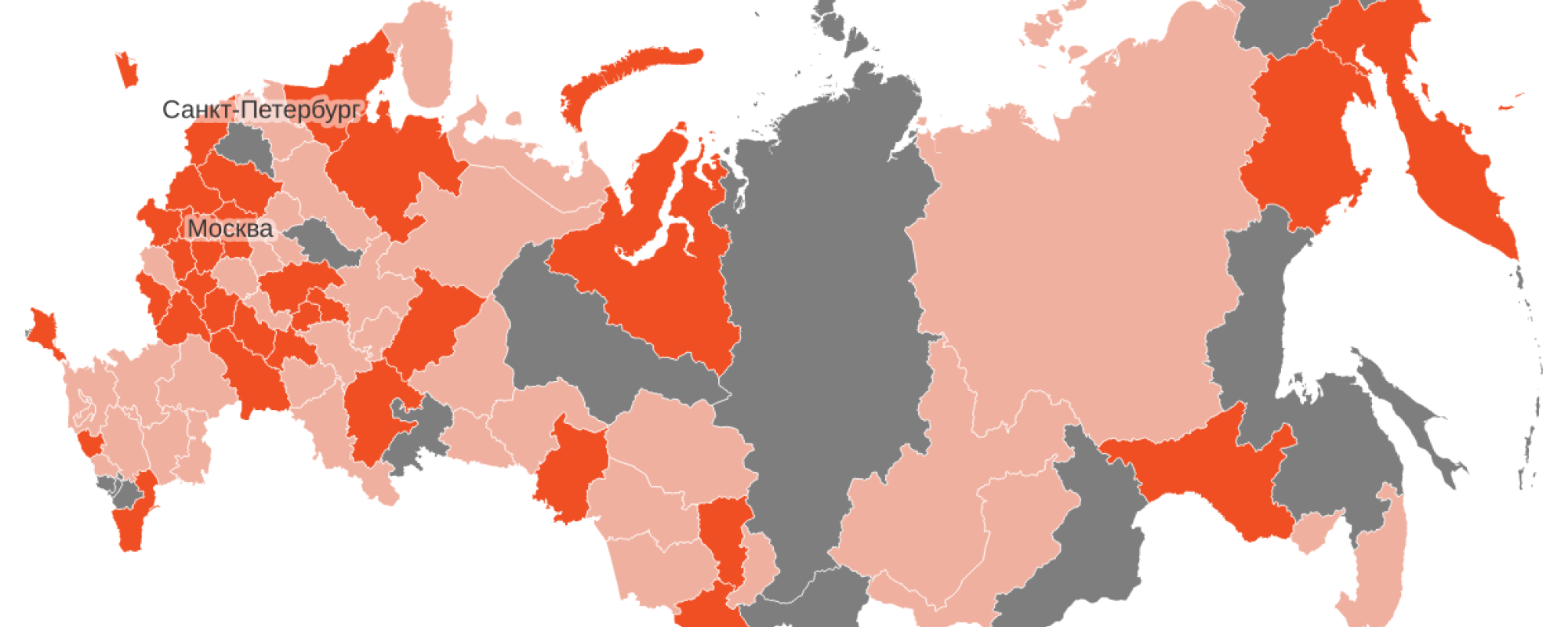Full Report in Russian Свобода собраний на фоне пандемии: полгода запретов
The report examines bans and restrictions imposed by the Russian authorities due to the COVID-19 pandemic on pickets, rallies, and other public events outside, which were in effect on September 1-3, 2020. The regulations governing these issues change frequently, so this analysis might not incorporate some of the most recent changes in individual regions.
Which restrictions are introduced
In 35 regions, restrictions apply directly to public events. In 26 of them (including Moscow and St. Petersburg), all public events are banned, regardless of the number of participants. Even one-person protests are prohibited. In some cases, the ban is not complete, but the participants' numbers, possible rally formats, and venues are restricted, or the approval procedure becomes more complicated. In some regions, bans are formulated in the form of recommendations, which may lead to refusals in approvals.
In another 36 regions, the events are limited in general without mention of «public events»; however, they might be implied in theory. In 24 of them, the ban applies to events with any number of participants.
The limitations often lack an expiration date. Out of 71 regions with explicit or potential restrictions on rallies, only 15 regions have a specific date of validity in their regulations. In the rest, this issue is not raised at all, or restrictions are introduced «until further notice», «until the high alert is lifted, » or «until the ban is lifted.»
In general, six months after the epidemic in Russia began, it is clearly too early to talk about quarantine restrictions' lifting for public events. According to a rough estimate, at the beginning of September, there are even more regions where public events are completely banned than at the end of March.
At the same time, many other quarantine restrictions are lifted. Sometimes exceptions are made for specific events, for example, for official events associated with the Great Patriotic War (World War II). These policies are in no way consistent with the goal of countering the spread of infection and indicates the use of the epidemic as an excuse to limit political expression.
While studying regional by-laws, we met various forms of restricting actions but did not see any norms aimed at compensating for restrictions. While prohibiting people from expressing their opinions on the streets, the authorities have not bothered to expand the possibilities for political expression in other forms, such as on the state media websites or other web resources.
How restrictions are introduced
Due to the COVID-19 pandemic, the federal subjects’ heads or regional governments introduced high alert modes. That is, those alert modes were introduced not by laws but by regional executive bylaws. There are the following two problems here. Firstly, the federal legislator endowed the constituent entities state authorities with some powers to restrict the citizens’ actions during the high alert regime only on April 1 when restrictions were already introduced in most regions. Secondly, the federal law did not introduce specific restrictions but delegated these powers in a general and very broad form to the regional authorities.
Regional legislative authorities are not involved in the introduction of restrictions. Although, per federal law, some issues regarding public events fall precisely under the regional parliaments’ jurisdiction.
There is no uniform manner for introducing and updating the «coronavirus» rules in the regions. Different authorities introduced different restrictions in the form of various bylaws with different procedures for preparation and adoption, as well as with different numbers of sequentially or simultaneously valid documents.
In some cases, it is unclear how to implement the introduced requirements in practice: the rules are not always detailed and have a prescribed procedure. In some cases, the new rules do not take into account the existing regulations and contradict it.
Restrictions are often formulated in a general way, making it difficult to say with confidence how they work and whether they apply to public events. The main problem is confusion with the concepts of «public events» and «mass events»: public events are sometimes listed along with mass events, sometimes they are described as a kind of mass event. The status of one-person protests is also often unclear. Uncertainty in itself seems to be a limitation: it gives the authorities another reason to suppress or prohibit actions at the approval stage and has an additional deterrent effect on potential demonstrators.



